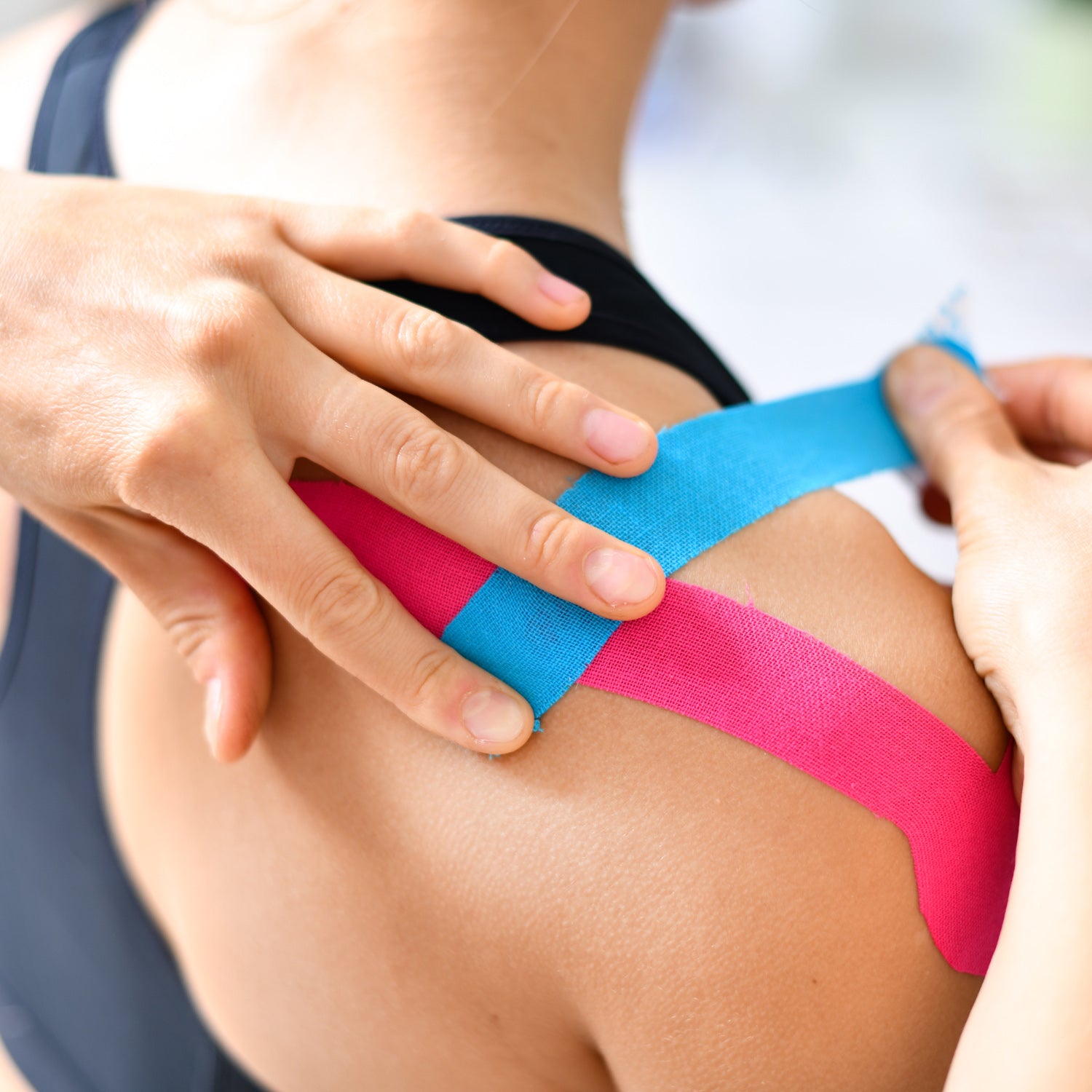You’ll often see athletes wearing bright-coloured tape on their skin. If you’re not aware, it’s called kinesiology tape - although it’s sometimes referred to as kinesio tape or KT tape.
The reasons it’s used, though, can be a mystery if it’s never been recommended to you by a medical professional. For more information to explore whether it’s something which could be beneficial for you, here’s a beginner’s guide to what kinesiology tape is and how it works.
What Is Kinesiology Tape?
First developed in Japan in the late 1970s, kinesiology tape has polymer elastic strands woven through it to make a flexible tape that allows full range of motion. It’s usually applied to stabilize muscles without impeding movement, and give athletes a greater awareness of muscle engagement.
It differs significantly to regular athletic tape, which is usually made from cotton and acts as a rigid or stiff support around joints.
Therapists often use kinesiology tape to treat or prevent a number of injuries such as IT band complaints, shin splints and plantar fasciitis.
How Does Kinesiology Tape Work?
The tape lifts the skin gently by recoiling when it’s applied. The subsequent compression and decompression in the area is picked up by the nerve receptors in the skin, which then alters pain signals to the brain.
Tape can be applied in different ways to either create tension or limit tension in the muscles depending on what will help the athlete. So if an athlete is recovering from a hamstring injury and has weak hamstrings as a result, kinesiology tape can be sued to increase the tension in the muscle, effectively making it contract and strengthen.
Alternatively, if an athlete is suffering with tight calves, kinesiology tape could be applied with minimal tension to limit pain signals to the brain.
If you think Kinesiology tape could help you, be sure to consult a physical therapist before applying it.


Share:
Should You Eat Raw Eggs To Build Muscle?
5 High-Protein Salads